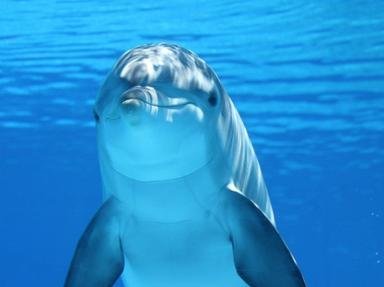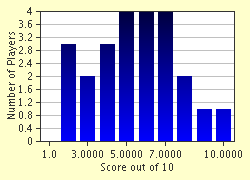Quiz Answer Key and Fun Facts
1. The osedax, or zombie worm, has been found at depths around 10,000 feet. It is between one and three inches long and has a variety of unique habits. One of these is how it obtains its food source. What does this worm of the Mariana Trench feast upon?
2. The seadevil anglerfish has been found below depths of 1,900 feet in the ocean. These fish, with their sharp teeth and large jaws, can eat prey bigger than their body. How do they catch their victims?
3. Telescope octopuses live in ocean depths of up to 6,500 feet. They obtained the name "telescope" because their eyes protrude outward from their body and rotate. What color is the rest of their body?
4. The deep-sea dragonfish, living at depths of over 6,000 feet, received its name because of its mouth full of razor sharp teeth and its thick coating of scales to protect it from the water pressure.
5. This shark lives in water depths between 3,000 and 5,000 feet. Its long, snake-like body and head full of 300 teeth encourage myths of sea serpents. What shark, named for its rows of gill openings, is this?
6. The benthocodon is a smaller denizen of the deep measuring about 3/4" across. What are these red colored creatures, with tentacles and bells, living at depths around 2,500 feet?
7. With a scientific name of Grimpoteuthis spp, this is the deepest living of any octopus and is found between 9,500 and 13,000 feet. It is umbrella type and eats its food whole. What is this creature who was named in honor of a Disney character's ears?
8. The barreleye fish has eyes in the shapes of tubes, or barrels, which are enclosed in a clear shield covering its head. The eyes are used to search out silhouettes of prey above the fish. What zone of the ocean, based on light level, does the barreleye live?
9. The deep-sea hatchetfish looks like the tool after which it is named. It swims in ocean depths ranging from 600 to 4,500 feet deep. It has a unique way to avoid predators. What tactic does it utilize which takes advantage of its bioluminescence?
10. The goblin shark, named after the Japanese mythological beings, can grow as long as 18 feet and lives around the 3,000 foot depth range. It has a long snout over a jaw full of teeth. What physical feat can this animal perform with its jaw?
Source: Author
stephgm67
This quiz was reviewed by FunTrivia editor
rossian before going online.
Any errors found in FunTrivia content are routinely corrected through our feedback system.

